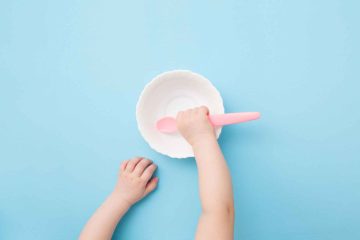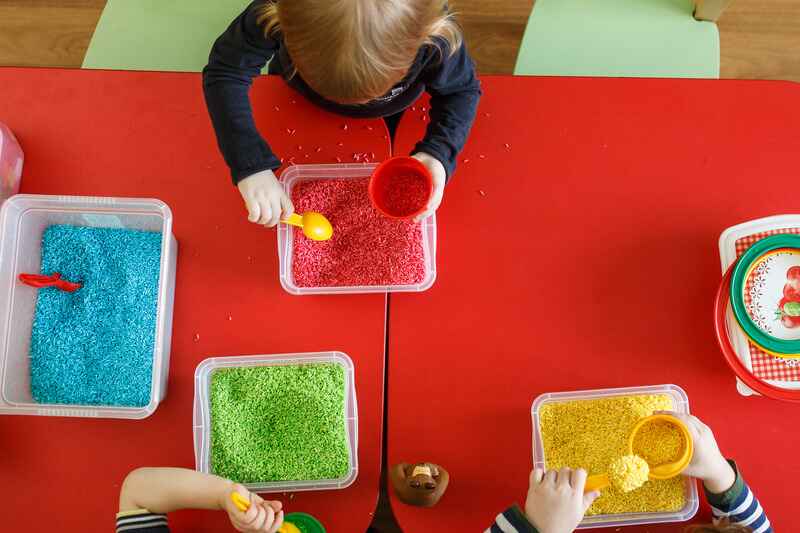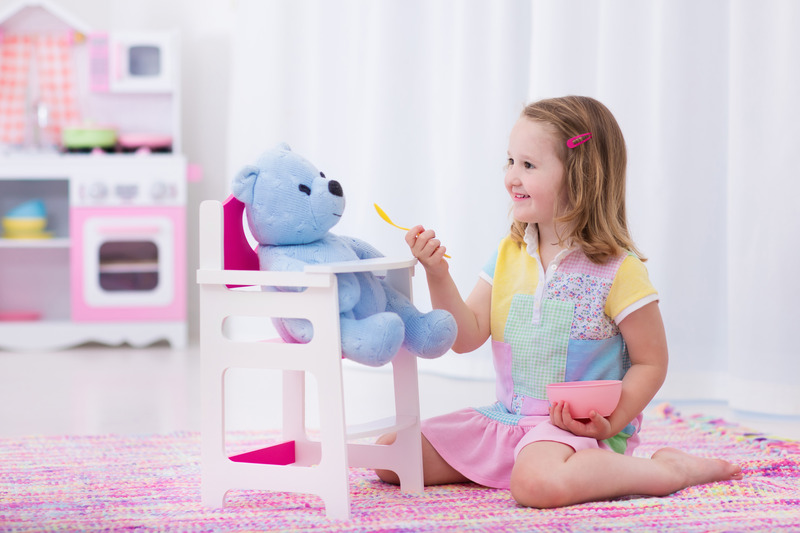
Is your little one in the process of learning to self-feed with a baby feeding spoon? That can be challenging. It will be their first time using a utensil, so they have a learning curve to overcome. Worse, they may want to avoid using it altogether.
As a parent, you must find a way to encourage them to try and master using a spoon. And what better way to teach a child the ways of life than fun activities? That’s what we’ll discuss in this article. Here are some of the best food play ideas involving spoons to help your child learn the art of self-feeding!
When Do Babies Start To Feed Themselves With a Spoon?
First things first: is your child ready to start self-feeding? It’s associated with age because babies can’t swallow a spoonful of baby food without choking during their first six months. At around 10–12 months, they can begin feeding themselves with a spoon.
That said, it is not always the case. The ability to self-feed still relies on several factors, such as:
- Their knowledge of finger foods.
- Interest in independent feeding.
- The development of their fine motor skills.
- The time they started eating solids.
You also need to watch out for the following signs that might show they’re ready to use baby spoons:
- They get fussy or disinterested in your spoon-feed routine.
- They need little to no support when sitting up.
- They no longer push away the food on a spoon with their tongue.
- They start displaying interest in what you or other family members eat.
- They don’t sway when holding their head up.
Every baby is unique, so having a different developmental pace is not unusual. But feel free to consult your pediatrician if the expected timeline for baby-led weaning is different. Be patient with time and practice. You and your little one will make it for sure!

The Fun in Feeding: 10 Food Activities Involving Baby Spoons
Parenting is no small task, especially when it comes to feeding. You need to introduce your child to various foods and baby utensils one at a time, which can be challenging. What if they avoid it? What if they have difficulty getting used to it?
One solution worth trying is to have fun while teaching them how to self-feed. Here are ten ideas on how to teach your baby to use a spoon in fun ways!
#1: Fruit Soup With a Baby Spoon
Let’s start with something simple. Fruit soups are an excellent opportunity to let your child have fun while familiarizing themselves with different types or sizes of baby spoons. Get a tray or container with water, cut up any fruit, and mix it with the water. Add some infant spoons, bowls, and a ladle.
This helps your baby learn valuable self-feeding actions, such as stirring, pouring, and mixing.
#2: Create a Scooping Station
A scooping station is similar to fruit soups but bigger and involves solids. It also resembles a sensory bin, except that it’s not premixed because your child will be the one to do it. Prepare a storage tub with funnels, containers, jars, and a baby spoon they can use for scooping.
Add solid materials to the containers, such as rice, rock salt, beans, cornmeal, etc. Then, let your little one experiment with them by scooping and pouring. Toddlers usually use a scoop for this, but you can always use infant spoons as an alternative to introduce them to the utensil.
#3: Edible Painting
Bring out your child’s inner artist with an edible painting activity. The idea is to incorporate food colouring into white food for your baby to experiment with. Greek yogurt is a good example. Place it on a wipeable surface and give your baby different “painting” utensils, such as pastry brushes, whisks, and baby spoons for scooping and blobbing.
#4: Hidden Object Game: Scooping Edition
Hidden object games are exciting! The scooping edition uses lentils, split peas, or rice to hide specific objects and encourage your baby to find them. The rule is to scoop and dig with a baby spoon to discover the treasures. It will definitely allow your little one to enjoy the learning process.
#5: Tip and Pour
This activity enhances your baby’s wrist pronation and supination (the up and down orientation of a body part). It focuses on two actions: tipping and pouring.
- For tipping, prepare jars or bottles with narrow necks with foods like rice or lentils. Then, encourage your child to tip them out of the bottles using a spoon.
- For pouring, add water into one container and teach your baby to pour it into another using baby spoons. This allows them to enhance their wrist control.

#6: Tea Party
What kid doesn’t love classic roleplay? Make it an opportunity to teach your child to start using baby spoons. Host a tea party and pretend to feed your little one’s dolls. This will convince them to participate and try making the same motion. Remember to praise your child for feeding their friends well!
#7: Playdough With a Spoon
Playdough is a classic food play. All you have to do is set the dough in a bin and encourage your little one to pick up small pieces with a spoon. There are many edible playdough recipes to come up with and use to help your child practice. You may also let them use other utensils like forks or alternative foods like marshmallows.
#8: Spoon Carton
Spoon carton is another activity that involves baby-led weaning spoons. To build one, grab an egg carton or any substitute cardboard box. Stab holes in it, stick the spoons down, and you’re all set! Your baby can start learning to pull the spoons out and get them back in. This will help them familiarize how to hold a spoon properly.
#9: Imitate Bringing a Utensil to Their Mouth
Your child needs to recognize and get used to bringing a spoon to their mouth or face. If they’re still unfamiliar with infant spoons, consider using similar objects to help them practice the particular action. Some examples are blowing bubbles, eating popsicles, playing whistles and harmonicas, and rubbing lotion on the face.
#10: Your Mini Cooking Assistant
How about letting your little one help in the kitchen? Some simple tasks can help them practice using baby utensils like spoons. Encourage them to stir the batter in a bowl or scoop some to fill a muffin tin. Helping them apply spread on bread slices with a spoon is another option. Use sticky spreads like yogurt, mashed potato, or strawberry jam to minimize spills.
How To Find the Best Baby Spoons for Fun Feeding
A parent needs the best baby spoon to make these fun food activities work. Remember your main agenda: help your baby learn how to self-feed with a spoon!
Here are pointers to review when buying baby spoons for your little one.
Safe Spoon Material
Babies put almost anything they find and touch into their mouths. As a parent, you must ensure they are safe from harm. A silicone spoon is a great option. It’s heat-resistant and phthalates-, PVC-, lead-, and BPA-free. It’s also grippy and soft, so it won’t hurt your child’s gums.
Progressive Size and Shape
Find a spoon size that your baby’s little hands can easily hold. It shouldn’t be too large and heavy, but not so small that it bores them. Look for something with an ergonomic design to fit your baby’s tiny hands.
Babies usually start with flat and small spoons when they’re six months old, but choose the more curved ones as they age.
Short, Non-Slip, and Adjustable Handle
Look for a spoon that makes it easy for your little one to grab and use on baby food. Short and bendable handles with curved tips are great for babies. They should also be non-slip to help them get a solid spoon grip.
Bright-Coloured and Washable
Buy a light-coloured spoon to keep them excited! The best baby spoons enable your baby to enjoy and concentrate better during mealtime. It is also best if it’s washable, freezer-friendly, and microwave-safe. That way, the baby spoon will stay intact and safe for a long time.
Free From Choking Hazards
Choose spoons with no loose screws or joints. If not assembled well, the small parts will only pose choking risks to your baby. Also, avoid spooning with trendy but unsafe designs, such as one with a removable tip.
Help Your Baby Become an Independent and Adventurous Eater
Teaching your little one to self-feed with a baby spoon is no small task. It necessitates a lot of patience and dedication. It’s not easy, but you can still enjoy the journey. Add fun to it with various food activities! Create a scooping station, try edible painting, host feeding roleplays, or make them your little assistant in the kitchen.
Most importantly, use the right baby spoon. Find something safe, easy to handle, colourful, and free from hazards. Doing so helps you and your baby enjoy the learning experience, which also means more memories to capture!
Baby-Led Weaning With Ashtonbee’s Baby Spoons
Looking for the best baby spoons to help your child self-feed? Try Ashtonbee’s baby spoon set. They’re perfect for transitioning your baby from milk to solids. Here are more amazing benefits.
- Made of soft, high-quality, food-grade silicone.
- Free from lead, PVC, BPA, and phthalates.
- Dishwasher-safe and handwash-friendly.
- Comes in 5 colourful variations.
Check out our baby feeding essentials collection today, and enhance your baby’s feeding process!


